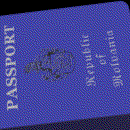| Hot Topics | |
|---|---|
Highly Dangerous Materials: Lithium Batteries
45 posts
• Page 1 of 2 • 1, 2
Highly Dangerous Materials: Lithium Batteries
Perhaps a better entry for the TIJ thread, but I'm continually fucked off by the Lithium Battery policies of JP Post. I need to send a couple of Nintendo 3DS units to the America. Other than 1) opening them up and removing the batteries, does any one have a cost-effective method? Using a Takkyubin service, or foreign service like UPS or DHL seems brutally expensive unless you have one of their accounts (which I don't).
I've rolled the dice a few times but my hit ratio sucks. Sucks enough that I'm not trying it again.
I've rolled the dice a few times but my hit ratio sucks. Sucks enough that I'm not trying it again.
-

gaijinpunch - Maezumo
- Posts: 766
- Joined: Sat Nov 06, 2010 10:40 am
gaijinpunch wrote:Perhaps a better entry for the TIJ thread, but I'm continually fucked off by the Lithium Battery policies of JP Post. I need to send a couple of Nintendo 3DS units to the America. Other than 1) opening them up and removing the batteries, does any one have a cost-effective method? Using a Takkyubin service, or foreign service like UPS or DHL seems brutally expensive unless you have one of their accounts (which I don't).
I've rolled the dice a few times but my hit ratio sucks. Sucks enough that I'm not trying it again.
bubble envelope, and rather than labeling as hazard material, put electronics and note "Nintendo DS and Accessories"
if it is only a "couple" then it should be that big of a deal. when I send stuff back they don't even look in the box i give them... they just ask if I packaged everything to where it wont break and that they are not held responsible blah blah...
Japan Post BTW.
"I thought what I'd do was, I'd pretend I would pull out, but won't."
-

IparryU - Maezumo
- Posts: 4285
- Joined: Thu Jun 04, 2009 11:09 pm
- Location: Balls deep draining out
Last week I had to send a Galaxy Tab back to the US - it was a demo unit. Japan Post refused to take it. They said that they don't use their own planes and so can't take lithium batteries as they blow up.
Sent by FedEx andit was a real PITA. Had to fill out a bunch of forms etc but fortunately the box had all of the codes needed for the hazardous materials form etc.
Haven't got the bill yet so not sure how much it will be. But you can just go to a Kinko's/FedEx office and get a quote I am sure.
:jawdrop:Japan Post Staff wrote:(paraphrased)If a FedEx or DHL plane goes down, then it is not so much of a drama than if a commercial jet goes down.
Sent by FedEx andit was a real PITA. Had to fill out a bunch of forms etc but fortunately the box had all of the codes needed for the hazardous materials form etc.
Haven't got the bill yet so not sure how much it will be. But you can just go to a Kinko's/FedEx office and get a quote I am sure.
GomiGirl
The Keitai Goddess!!!
The Keitai Goddess!!!
-

GomiGirl - Posts: 9129
- Joined: Fri Jul 05, 2002 3:56 pm
- Location: Roamin' with my fave 12"!!
GomiGirl wrote:Last week I had to send a Galaxy Tab back to the US - it was a demo unit. Japan Post refused to take it. They said that they don't use their own planes and so can't take lithium batteries as they blow up.
Sent by FedEx andit was a real PITA. Had to fill out a bunch of forms etc but fortunately the box had all of the codes needed for the hazardous materials form etc.
Haven't got the bill yet so not sure how much it will be. But you can just go to a Kinko's/FedEx office and get a quote I am sure.
seems like I got it easy or the guy clearly didn't care...
"I thought what I'd do was, I'd pretend I would pull out, but won't."
-

IparryU - Maezumo
- Posts: 4285
- Joined: Thu Jun 04, 2009 11:09 pm
- Location: Balls deep draining out
I send/receive stuff with those nasty batteries all the time. They don't explode as much as they just catch fire and burn up. Only appears to happen when punctured and I have never had issues sending/receiving anything when the batteries are inside something like what you guys are sending. If you guys are set on using Japan Post, just be vague about the contents description and make sure you insure it.
SDH "cut your dick off! It's only going to get you in more trouble!"
-

matsuki - Posts: 16047
- Joined: Wed Feb 02, 2011 4:29 pm
- Location: All Aisu deserves a good bukkake
just be vague about the contents description and make sure you insure it.
This is where the dice roll comes in. 3 of the 4 times I've sent them (2 inadvertently) they have come back, and there is no refund. One of those TIJ shame things.
-

gaijinpunch - Maezumo
- Posts: 766
- Joined: Sat Nov 06, 2010 10:40 am
I sent a few items with lithium batteries in them without trouble, and then a couple that were returned to me. They seem to scan them (probably at the airport) and will open packages that look like they might have a battery. The whole thing is rather absurd but is unlikely to change anytime soon.
And you run and you run to catch up with the sun but it's sinking
Racing around to come up behind you again
The sun is the same in a relative way, but you're older
Shorter of breath and one day closer to death
Racing around to come up behind you again
The sun is the same in a relative way, but you're older
Shorter of breath and one day closer to death
-

FG Lurker - Posts: 7855
- Joined: Mon Nov 29, 2004 6:16 pm
- Location: On the run
Here is a link to site covering the different shipping options:
Surviving In Japan - how to ship electronics with lithium batteries
Surviving In Japan - how to ship electronics with lithium batteries
I recently tried to ship an old MacBook Pro and iPhone to my sister in the U.S. We took them to the post office, paid 8,000 yen, and went on our merry way. A postal worker called us later to say that they couldn't ship the items as they contain lithium ion batteries, which fall under the "dangerous goods" category. We asked about shipping by sea, but were told this was not an option.
This then led to researching various other options for shipping these items abroad, although in the end, the cheapest option is to ship just the laptop without the battery in it (it's dead, anyway).
GomiGirl
The Keitai Goddess!!!
The Keitai Goddess!!!
-

GomiGirl - Posts: 9129
- Joined: Fri Jul 05, 2002 3:56 pm
- Location: Roamin' with my fave 12"!!
Yeah, no big deal right? Just ask the crews of the Asiana and UPS 747 freighters that crashed because of Li batteries last year.
Oh wait, you can't. They're dead.
Asiana UPS
Oh wait, you can't. They're dead.
Asiana UPS
"Doing engineering calculations with the imperial system is like wiping your ass with acorns, it works, but it's painful and stupid."
"Plus, it's British."
- Nameless
"Plus, it's British."
- Nameless
-

Tsuru - Posts: 2408
- Joined: Tue Jan 14, 2003 9:08 am
- Location: Farcical Blingboddery
A pallet of the things overheats, and reaches a critical point where the material reaches a thermal runaway condition. At that point you can only extinguish it by throwing it in a swimming pool, which is clearly not possible on a 747 at 35000ft. These guys died in mortal terror, engulfed in the thickest smoke you can imagine with oxygen masks on and not a hope in hell making it back to a runway. The UPS guys couldn't even change the frequencies on their radios and had to rely on ATC to tell them their altitude and approximate airspeed.Russell wrote:So, what actually happened in those cases?
So now it takes a while longer before they can deliver your precious batteries from http://www.dealextreme.com.
"Doing engineering calculations with the imperial system is like wiping your ass with acorns, it works, but it's painful and stupid."
"Plus, it's British."
- Nameless
"Plus, it's British."
- Nameless
-

Tsuru - Posts: 2408
- Joined: Tue Jan 14, 2003 9:08 am
- Location: Farcical Blingboddery
Tsuru wrote:A pallet of the things overheats, and reaches a critical point where the material reaches a thermal runaway condition. At that point you can only extinguish it by throwing it in a swimming pool, which is clearly not possible on a 747 at 35000ft.
So now it takes a while longer before they can deliver your precious batteries from http://www.dealextreme.com.
Are these defect batteries, or is this kind of common in this type of batteries? Can this be prevented by shipping them before they are electrically charged?
-

Russell - Maezumo
- Posts: 8580
- Images: 1
- Joined: Fri Aug 13, 2010 11:51 pm
Charged or non-charged, Li batteries are light metal (flammable) packed tightly together with an alcohol-based electrolyte. Sending them out without a charge is probably not going to change anything about the flammability of these materials.Russell wrote:Are these defect batteries, or is this kind of common in this type of batteries? Can this be prevented by shipping them before they are electrically charged?
"Doing engineering calculations with the imperial system is like wiping your ass with acorns, it works, but it's painful and stupid."
"Plus, it's British."
- Nameless
"Plus, it's British."
- Nameless
-

Tsuru - Posts: 2408
- Joined: Tue Jan 14, 2003 9:08 am
- Location: Farcical Blingboddery
Russell wrote:Are these defect batteries, or is this kind of common in this type of batteries? Can this be prevented by shipping them before they are electrically charged?
LiPo batteries are strange beast, some sort of evolutionnary stop gap where the power grew faster than the capacity to handle it.
Explosion demonstrated here at 2:40:
[yt]G1qAml7qBAc[/yt]
Most accident with lipo happen if the physical container is broken or if there is overcharging.
Tsuru(tsuru(giggle)) Ain't them cargo plane don't have CO2 fire suppressing system ?
-

Coligny - Posts: 21821
- Images: 10
- Joined: Sat Jan 17, 2009 8:12 pm
- Location: Mostly big mouth and bad ideas...
Coligny wrote:Most accident with lipo happen if the physical container is broken or if there is overcharging.
Awe, come on Coligny, it's a potentially life-saving feature!
[ythd]7gZ8FHEUCl8[/ythd]
(Better drink your own piss...)
And you run and you run to catch up with the sun but it's sinking
Racing around to come up behind you again
The sun is the same in a relative way, but you're older
Shorter of breath and one day closer to death
Racing around to come up behind you again
The sun is the same in a relative way, but you're older
Shorter of breath and one day closer to death
-

FG Lurker - Posts: 7855
- Joined: Mon Nov 29, 2004 6:16 pm
- Location: On the run
FG Lurker wrote:Awe, come on Coligny, it's a potentially life-saving feature!
(Better drink your own piss...)
This guy should do porn, seriously...
Pron Survival In The Wild Starring Yua Aida...
Filming will start in Hokkaido on the day after temperatur raise above -20, just before the day they reach +40...
-

Coligny - Posts: 21821
- Images: 10
- Joined: Sat Jan 17, 2009 8:12 pm
- Location: Mostly big mouth and bad ideas...
Tsuru wrote:Charged or non-charged, Li batteries are light metal (flammable) packed tightly together with an alcohol-based electrolyte. Sending them out without a charge is probably not going to change anything about the flammability of these materials.
Side note...
There is no such thing as "non charged" LiPo... A non charged LiPo is a dead LiPo. They handle overcharge and overdischarge as badly...
For long term storage it is recomended to put them at 50% of their charging capacity which means around 3.46V per cell and keep them above freezing temperature in a fridge. But that's basically all...
They are a bit as inconvenient as nukular power... As long as you got one around you have to babysit it...
Personnally I store the expensive one in a fridge (Iron bread baking shape with sliding top, strong enough to resist an explosion.) And the cheap one in a metal red bucket full of cat litter. (the kind they sell for firefighting. but with a cover... so the cats don't use it as a fancy loo)
-

Coligny - Posts: 21821
- Images: 10
- Joined: Sat Jan 17, 2009 8:12 pm
- Location: Mostly big mouth and bad ideas...
None of the fire extinguishing systems available on cargo aircraft including BCF (halon) extinguishers and the option of intentional depressurization of the cabin at altitude can extinguish a pallet of burning Li-battery packs. As I said, the only option is basically throwing it in a swimming pool to stop the endothermic reaction by cooling, but this is not an option on an aircraft.Coligny wrote:Tsuru(tsuru(giggle)) Ain't them cargo plane don't have CO2 fire suppressing system ?
"Doing engineering calculations with the imperial system is like wiping your ass with acorns, it works, but it's painful and stupid."
"Plus, it's British."
- Nameless
"Plus, it's British."
- Nameless
-

Tsuru - Posts: 2408
- Joined: Tue Jan 14, 2003 9:08 am
- Location: Farcical Blingboddery
Tsuru wrote:None of the fire extinguishing systems available on cargo aircraft including BCF (halon) extinguishers and the option of intentional depressurization of the cabin at altitude can extinguish a pallet of burning Li-battery packs. As I said, the only option is basically throwing it in a swimming pool to stop the endothermic reaction by cooling, but this is not an option on an aircraft.
i dont think he is listening to you...
"I thought what I'd do was, I'd pretend I would pull out, but won't."
-

IparryU - Maezumo
- Posts: 4285
- Joined: Thu Jun 04, 2009 11:09 pm
- Location: Balls deep draining out
Tsuru wrote:These guys died in mortal terror, engulfed in the thickest smoke you can imagine with oxygen masks on and not a hope in hell making it back to a runway.
This is one of many reasons for UAV technology to enter the commercial space.
I can't see a reason for human pilots in the airfreight business, but I'm not a pilot so maybe I'm missing something.
-

cstaylor - Posts: 6383
- Joined: Mon Apr 29, 2002 2:07 am
- Location: Yokohama, Japan
cstaylor wrote:I can't see a reason for human pilots in the airfreight business, but I'm not a pilot so maybe I'm missing something.
Hello....who else is going to commit human error? (Like making Tom Hanks movies about crashing an air freight plane...)
Je pète dans votre direction générale
 8O8O8O8O8O
8O8O8O8O8O
Tiocfaidh ar la
Tiocfaidh ar la
-

Screwed-down Hairdo - Maezumo
- Posts: 6721
- Joined: Wed May 20, 2009 7:03 pm
cstaylor wrote:This is one of many reasons for UAV technology to enter the commercial space.
I can't see a reason for human pilots in the airfreight business, but I'm not a pilot so maybe I'm missing something.
UAV's are still flown by pilots, they're just on the ground. The incident rate is very low for all types of commercial aircraft, I don't think the expense of changing to UAV would be worth it. I'm also not a pilot though so I might be missing something too.
And you run and you run to catch up with the sun but it's sinking
Racing around to come up behind you again
The sun is the same in a relative way, but you're older
Shorter of breath and one day closer to death
Racing around to come up behind you again
The sun is the same in a relative way, but you're older
Shorter of breath and one day closer to death
-

FG Lurker - Posts: 7855
- Joined: Mon Nov 29, 2004 6:16 pm
- Location: On the run
FG Lurker wrote:UAV's are still flown by pilots, they're just on the ground.
From the source
The UAV is an acronym for Unmanned Aerial Vehicle, which is an aircraft with no pilot on board. UAVs can be remote controlled aircraft (e.g. flown by a pilot at a ground control station) or can fly autonomously based on pre-programmed flight plans or more complex dynamic automation systems.
Think Google Driverless Cars at 30,000 feet.
-

cstaylor - Posts: 6383
- Joined: Mon Apr 29, 2002 2:07 am
- Location: Yokohama, Japan
cstaylor wrote:Think Google Driverless Cars at 30,000 feet.
I am thinking of jumbo jets flying at 30,000 feet with no pilot.
How much *fun* will hackers have trying to get into the control system.. no need for suicide pilots anymore - just a script kiddie with jihad tendencies.
GomiGirl
The Keitai Goddess!!!
The Keitai Goddess!!!
-

GomiGirl - Posts: 9129
- Joined: Fri Jul 05, 2002 3:56 pm
- Location: Roamin' with my fave 12"!!
GomiGirl wrote:I am thinking of jumbo jets flying at 30,000 feet with no pilot.
How much *fun* will hackers have trying to get into the control system.. no need for suicide pilots anymore - just a script kiddie with jihad tendencies.

I doubt anyone would have external access to a running system like that, and I'm talking about airfreight, not commercial passenger jets.
I'm not a pilot, so I can't argue this point from authority, but I've read that the newer jumbos (including passenger jets) are automated already]commit human error[/url].
-

cstaylor - Posts: 6383
- Joined: Mon Apr 29, 2002 2:07 am
- Location: Yokohama, Japan
cstaylor wrote:From the source
UAVs used for pattern-based surveillance can be computer controlled, yes. Other types are pilot controlled.
And you run and you run to catch up with the sun but it's sinking
Racing around to come up behind you again
The sun is the same in a relative way, but you're older
Shorter of breath and one day closer to death
Racing around to come up behind you again
The sun is the same in a relative way, but you're older
Shorter of breath and one day closer to death
-

FG Lurker - Posts: 7855
- Joined: Mon Nov 29, 2004 6:16 pm
- Location: On the run
FG Lurker wrote:UAVs used for pattern-based surveillance can be computer controlled, yes. Other types are pilot controlled.
What's more pattern-oriented than take-off, waypointing, and landing?
IANAP, but from what I understand the big trouble is routing all of those flights when they come in to land... I've heard flight traffic control is a very stressful job.
-

cstaylor - Posts: 6383
- Joined: Mon Apr 29, 2002 2:07 am
- Location: Yokohama, Japan
cstaylor wrote:What's more pattern-oriented than take-off, waypointing, and landing?
IANAP, but from what I understand the big trouble is routing all of those flights when they come in to land... I've heard flight traffic control is a very stressful job.
Yeah, in the end IANAP either. I would imagine there are good reasons these planes aren't already UAVs, probably a combination of technology and costs. I think they will eventually go that route, just a matter of enough time to make it cheap and safer.
And you run and you run to catch up with the sun but it's sinking
Racing around to come up behind you again
The sun is the same in a relative way, but you're older
Shorter of breath and one day closer to death
Racing around to come up behind you again
The sun is the same in a relative way, but you're older
Shorter of breath and one day closer to death
-

FG Lurker - Posts: 7855
- Joined: Mon Nov 29, 2004 6:16 pm
- Location: On the run
45 posts
• Page 1 of 2 • 1, 2
Who is online
Users browsing this forum: No registered users and 1 guest

